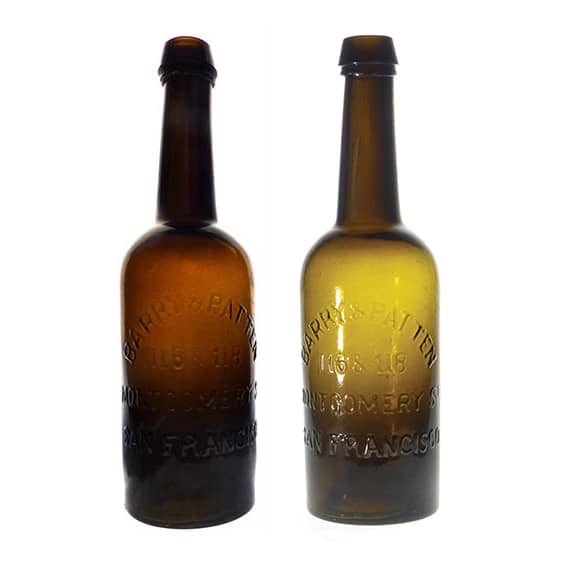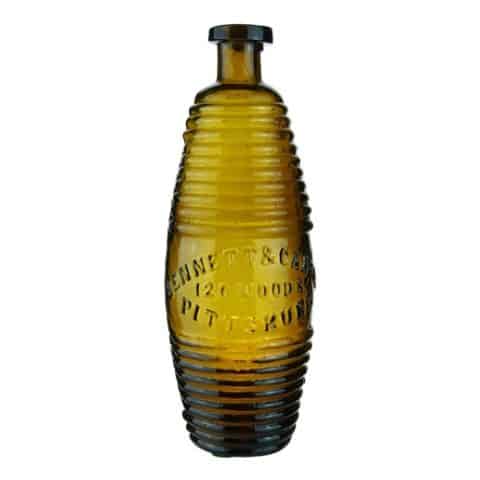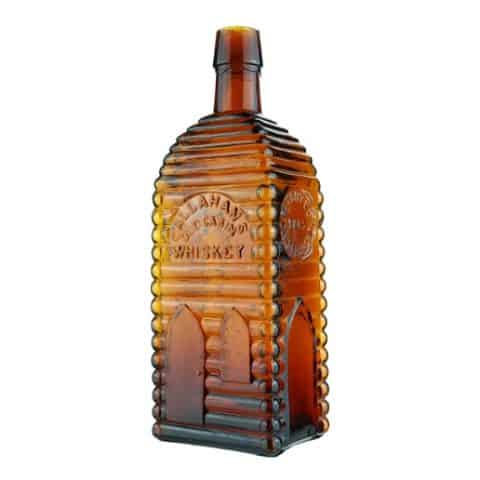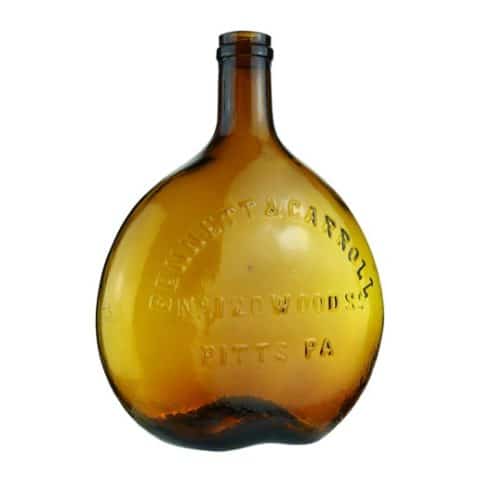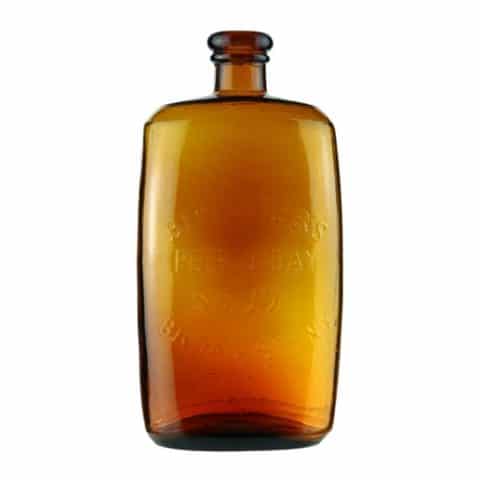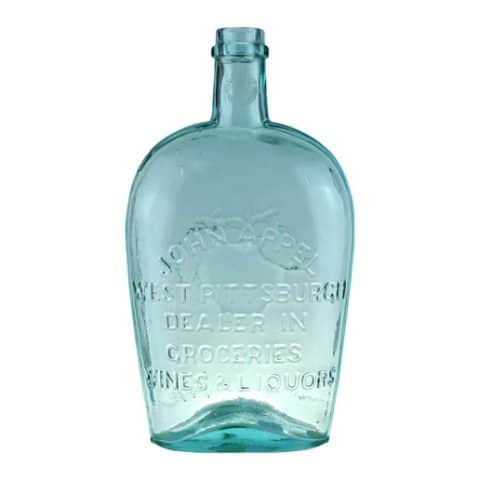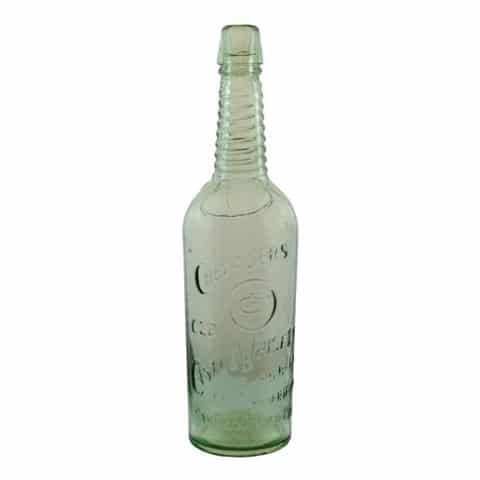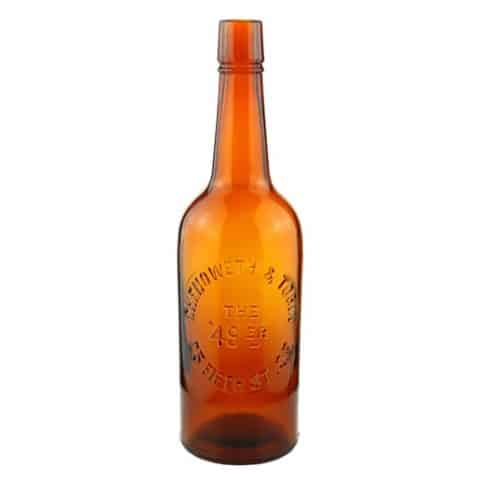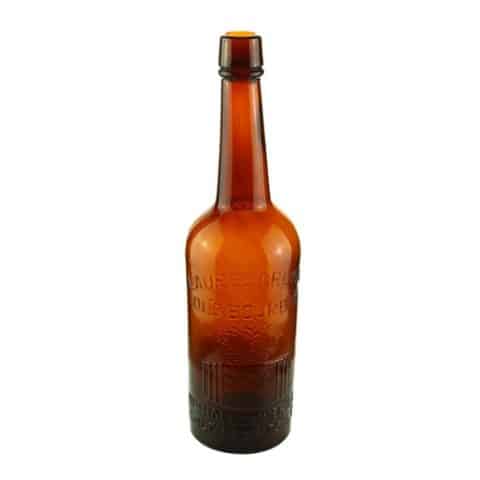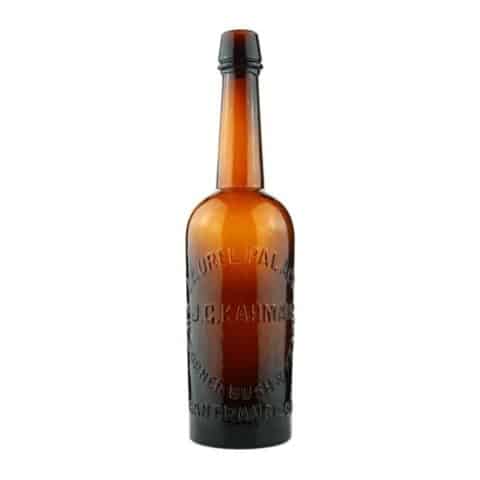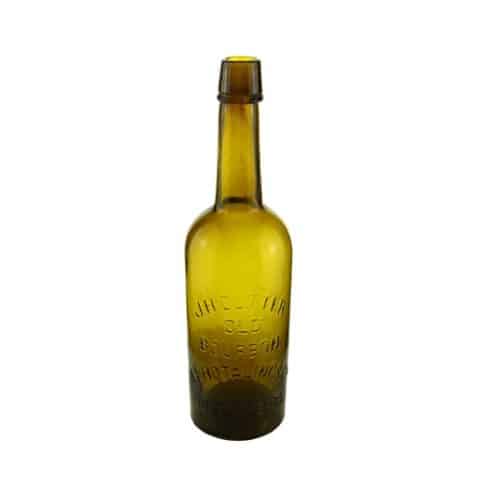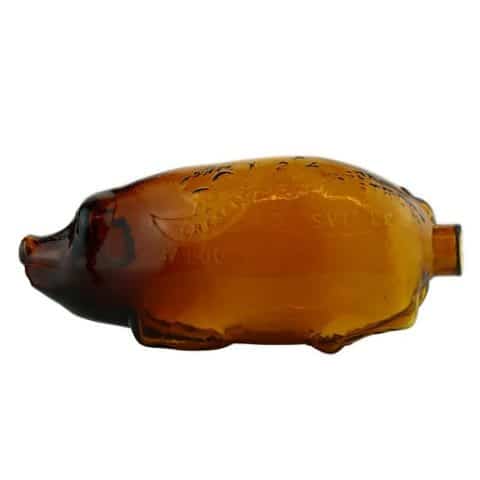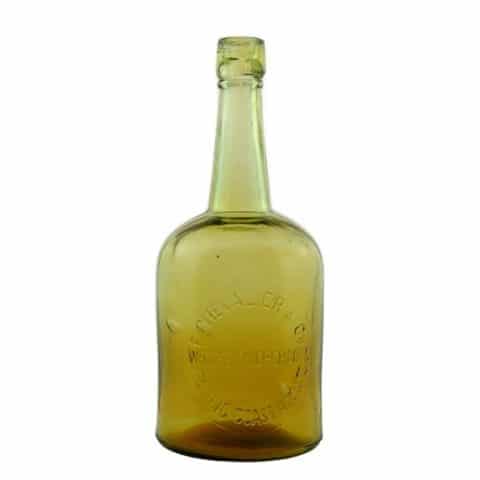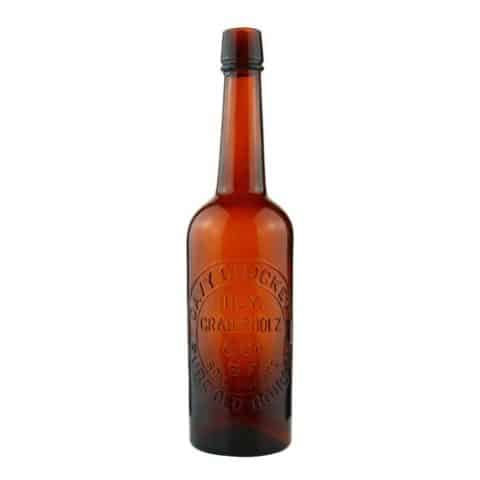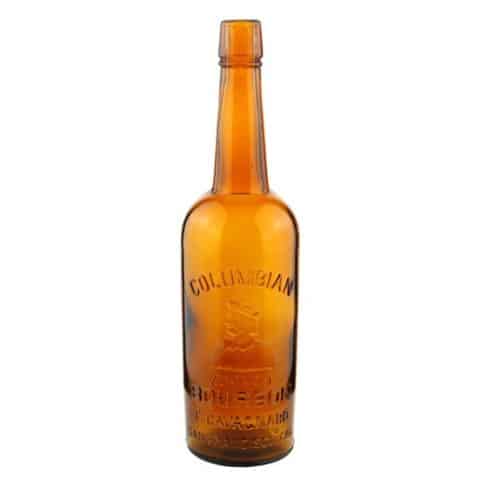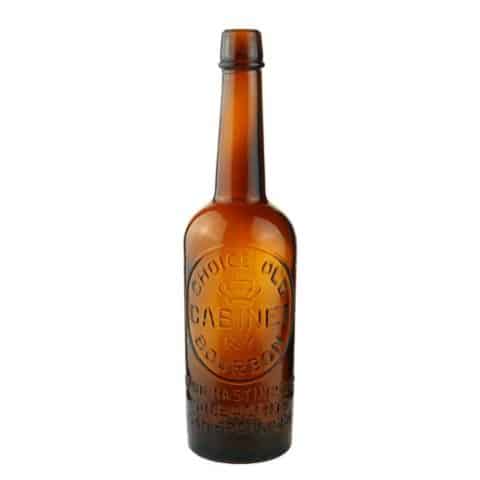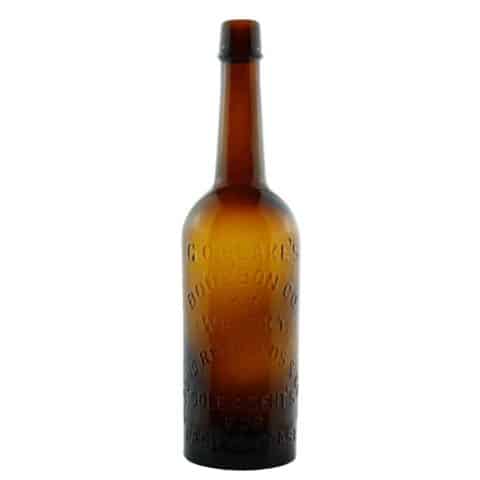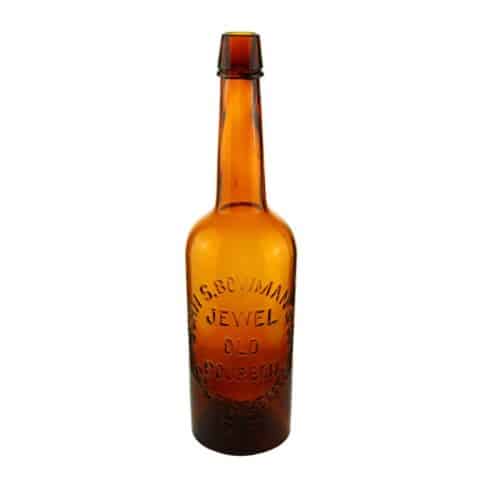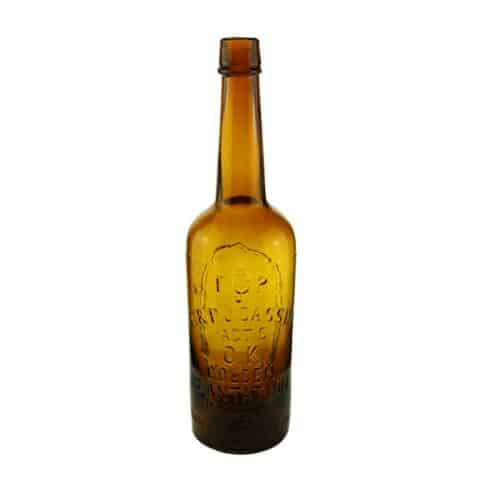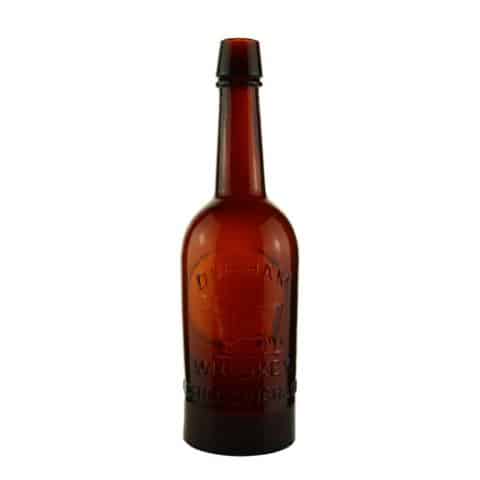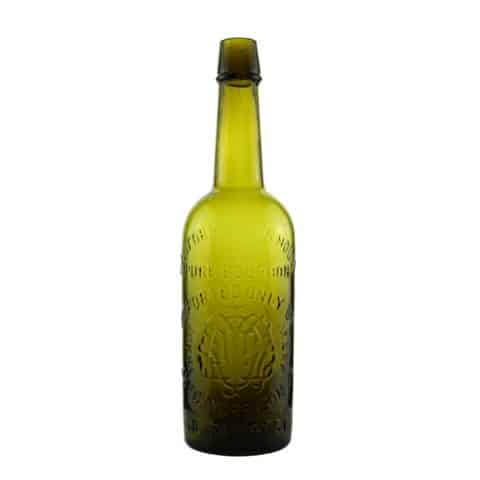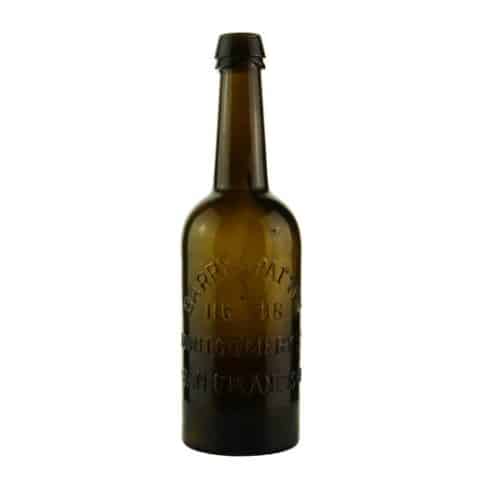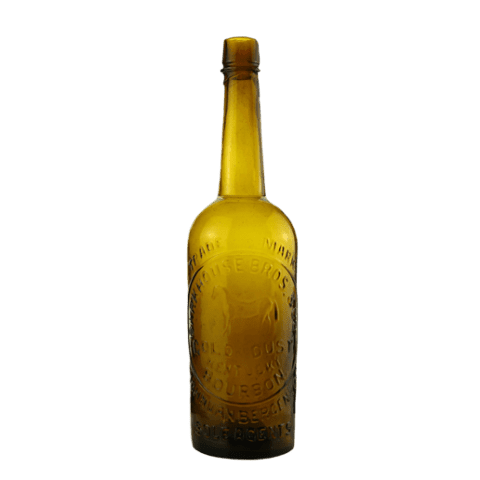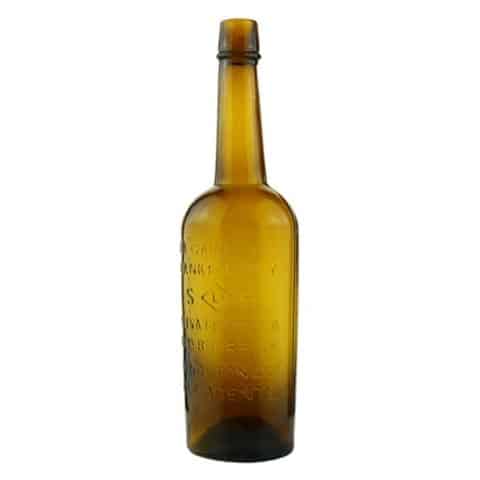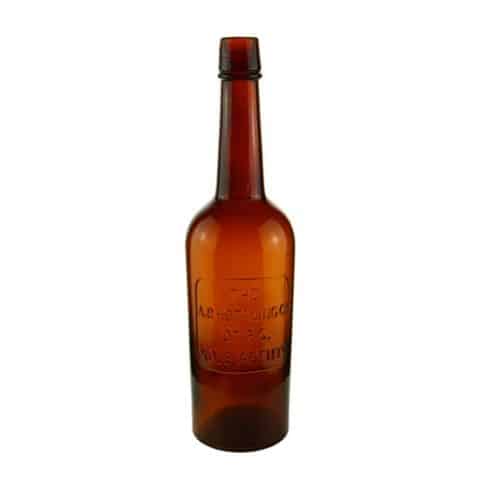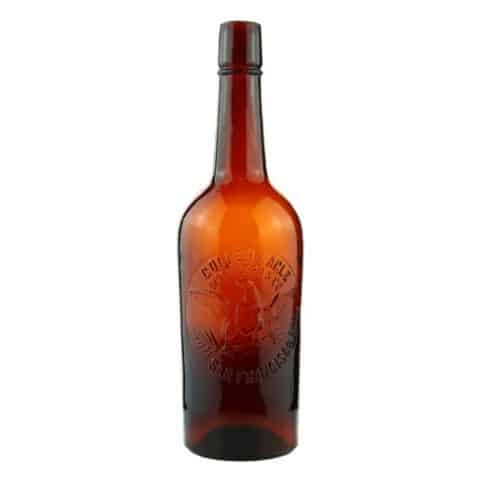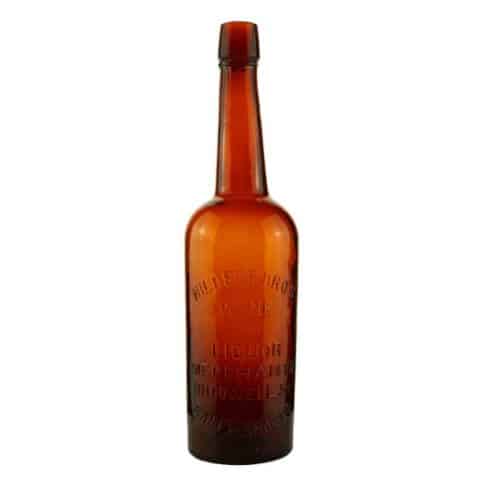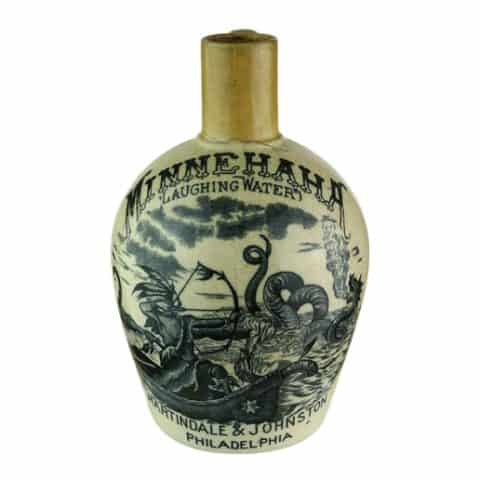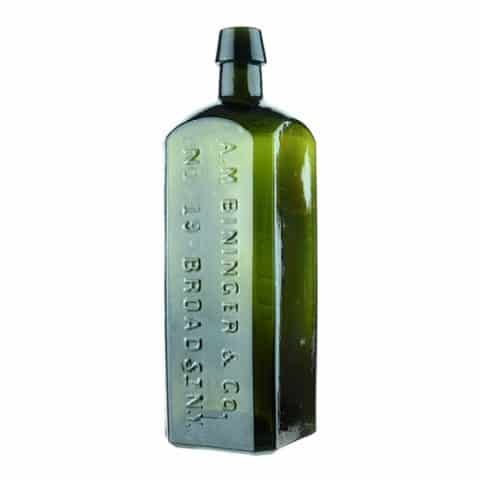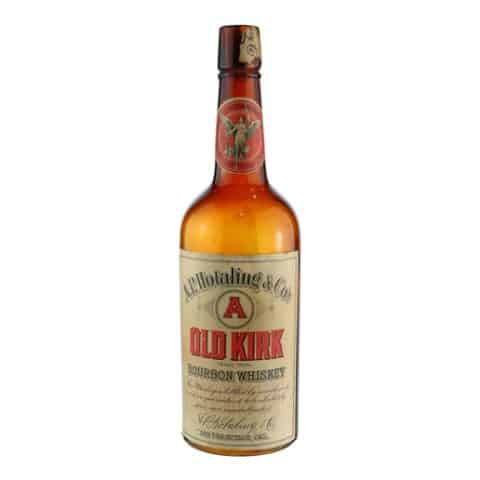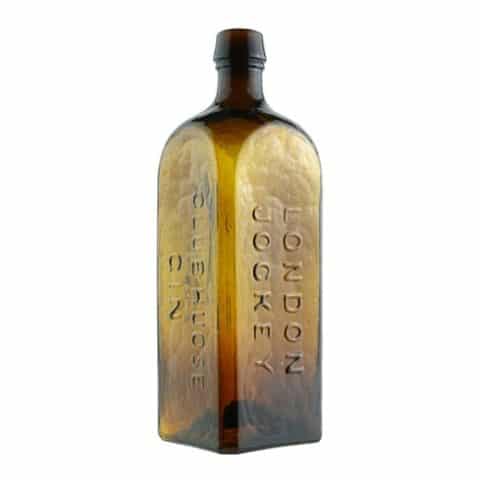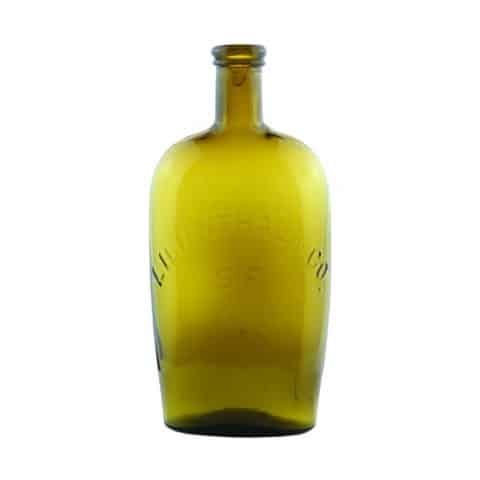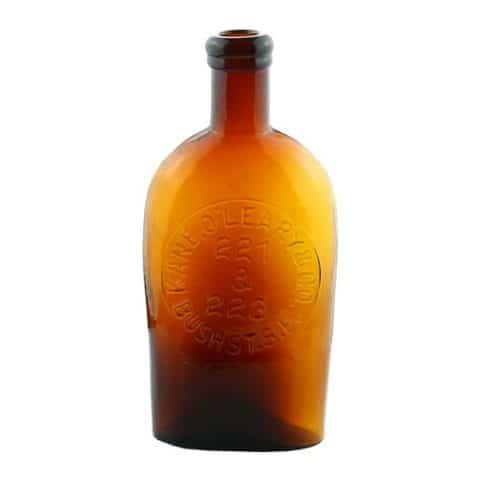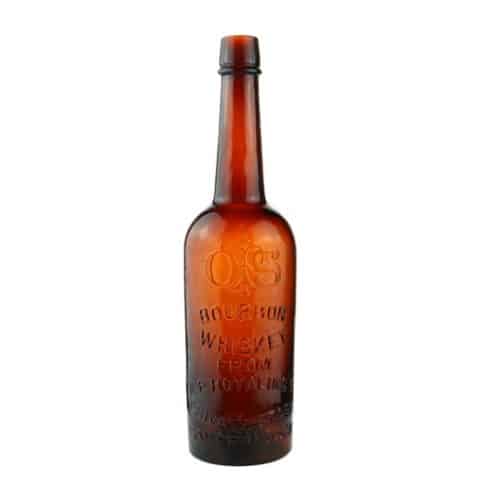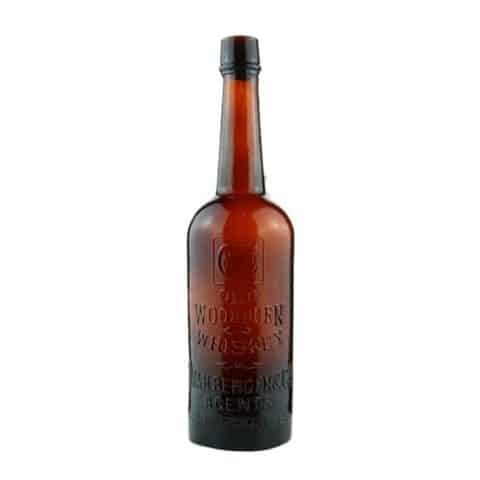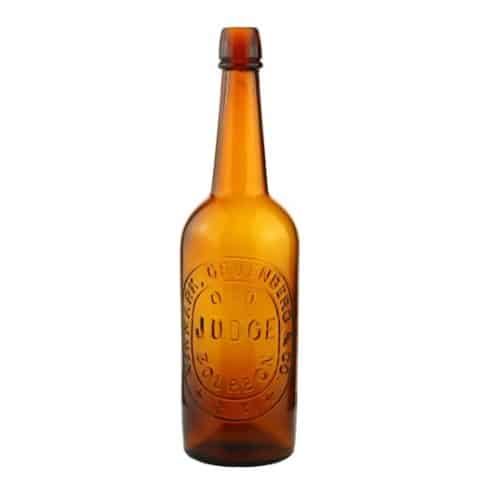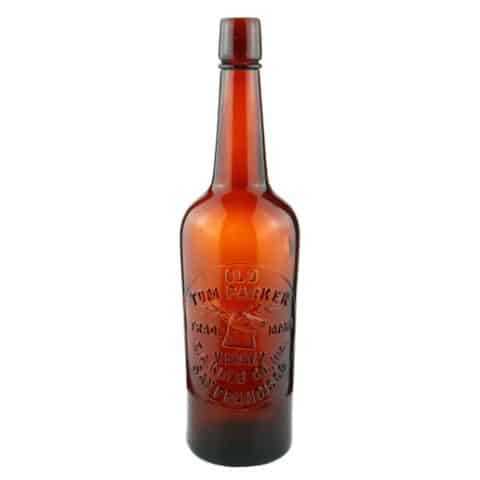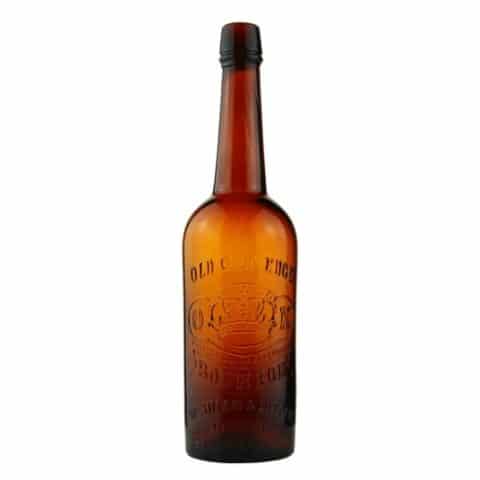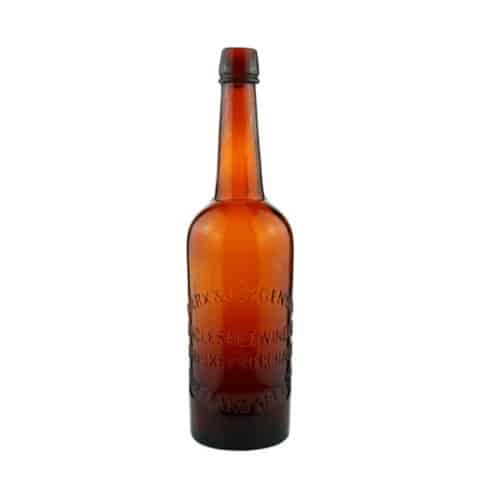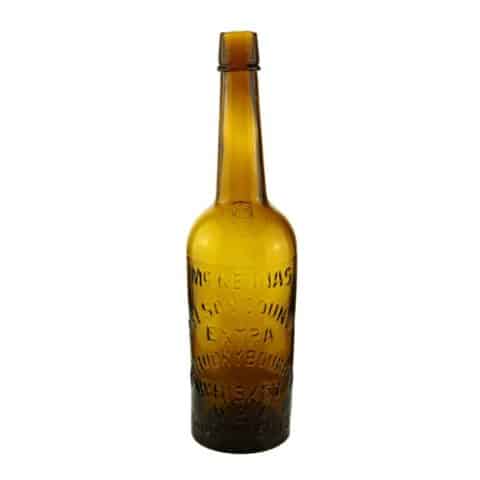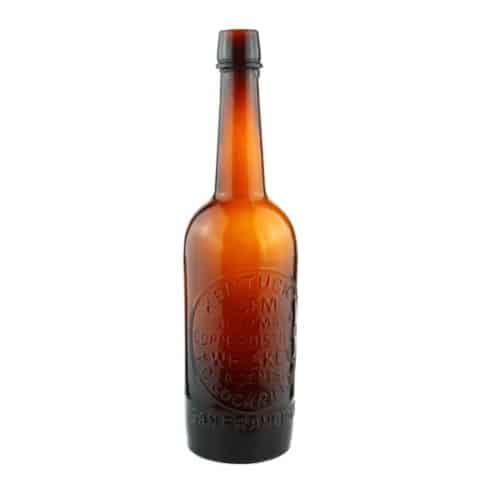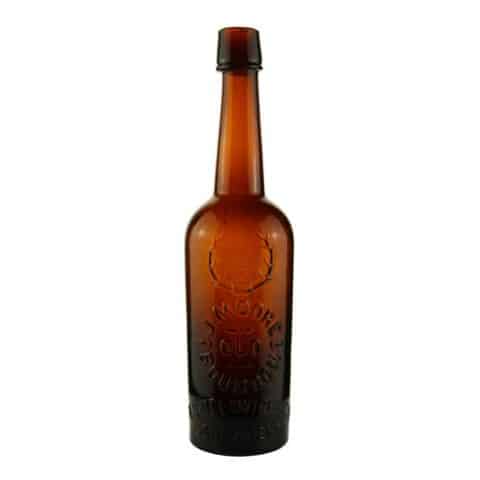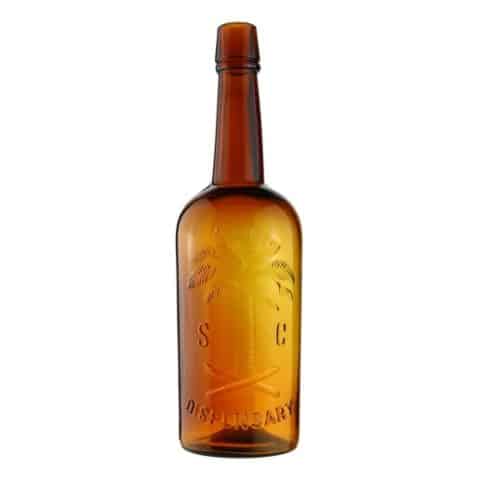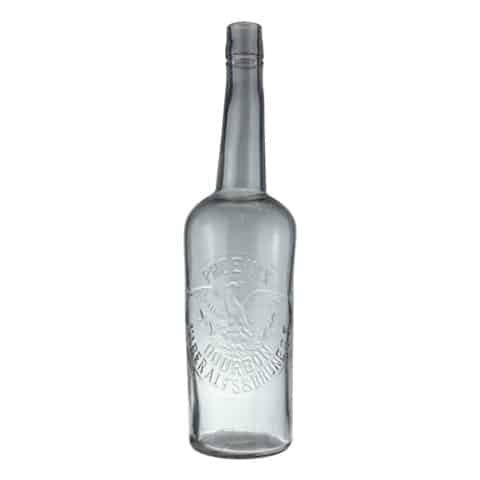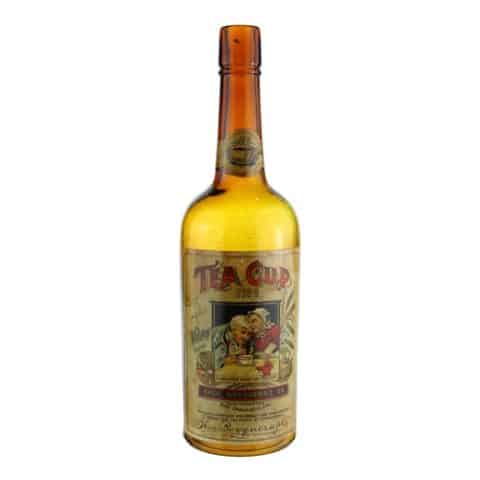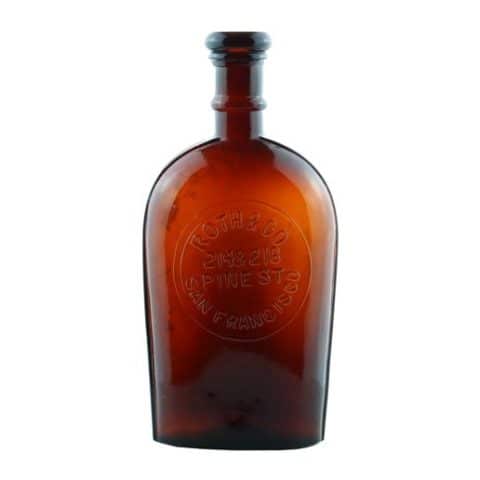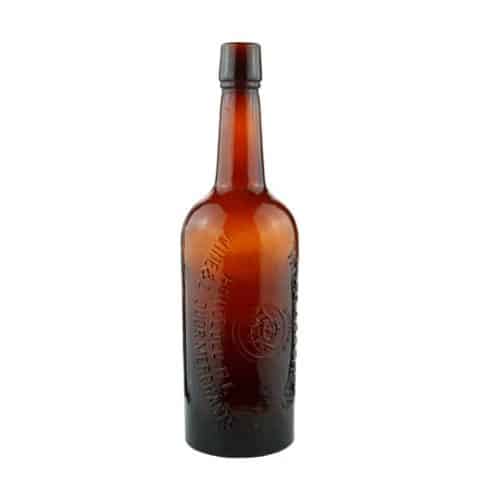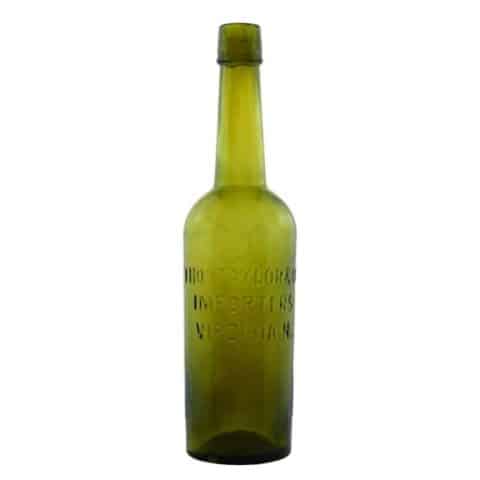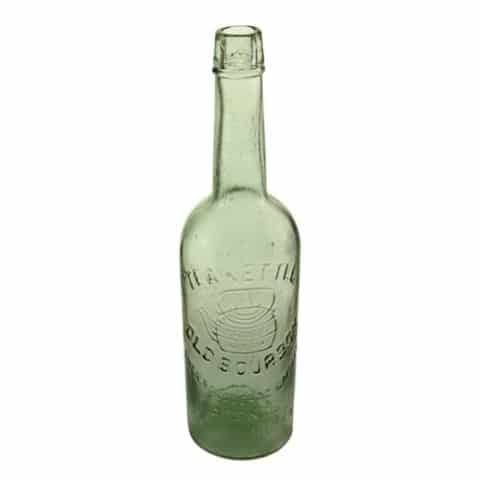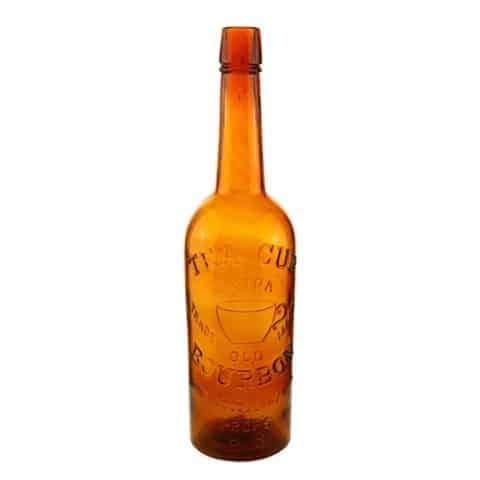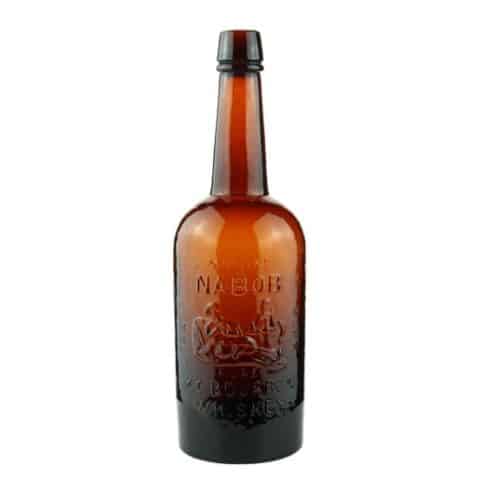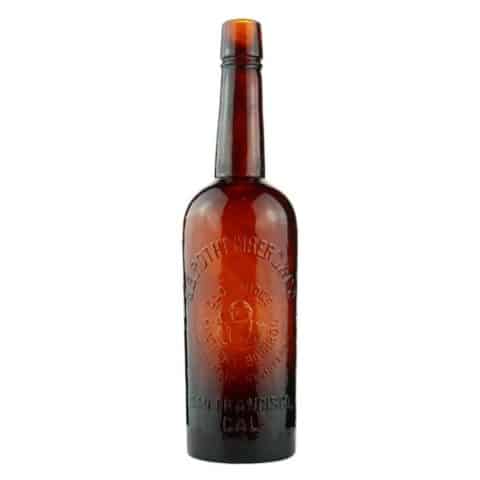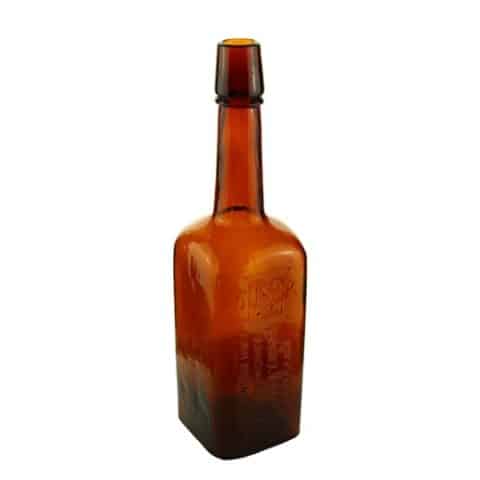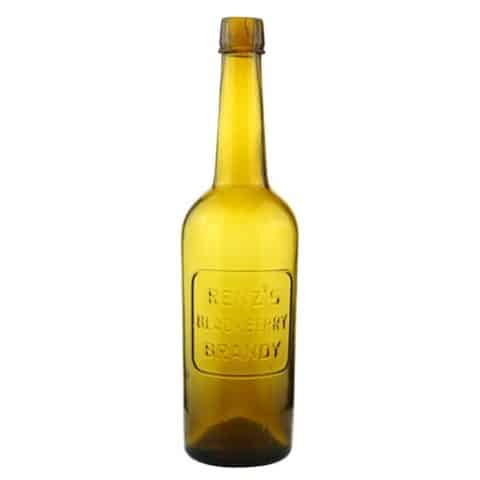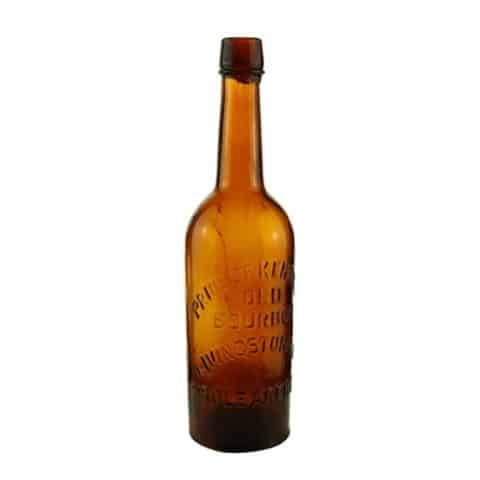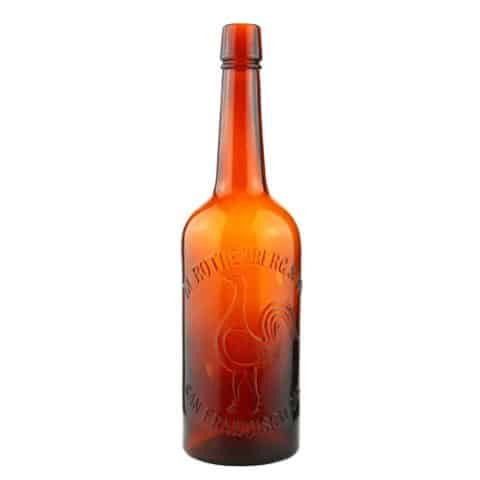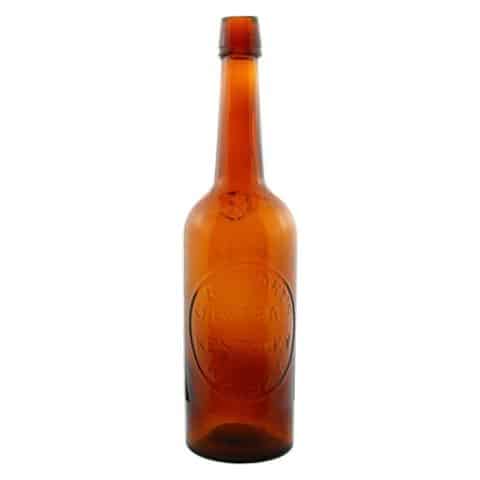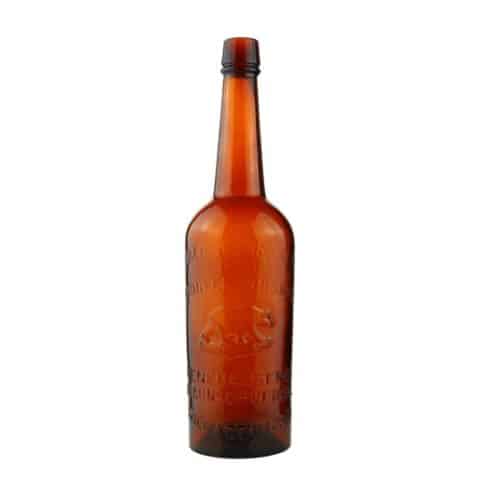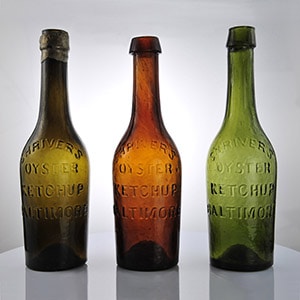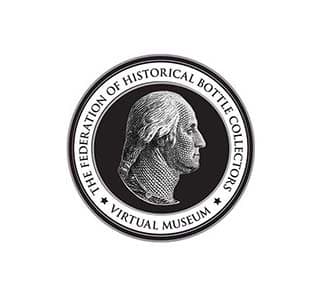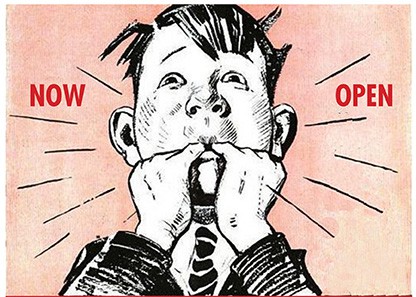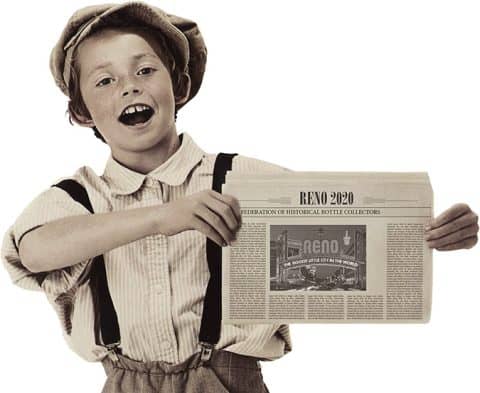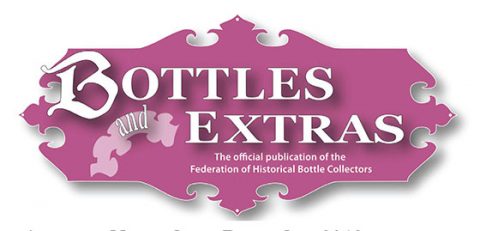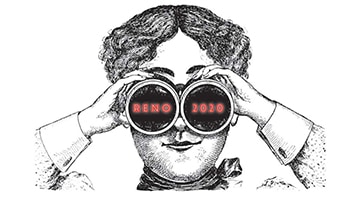Barry & Patten
Barry & Patten
116 & 118 Montgomery St. S. F.
Theodore A. Barry and Benjamin A. Patten, San Francisco, California
Olive-Amber Pint
Provenance: Richard T. Siri Collection
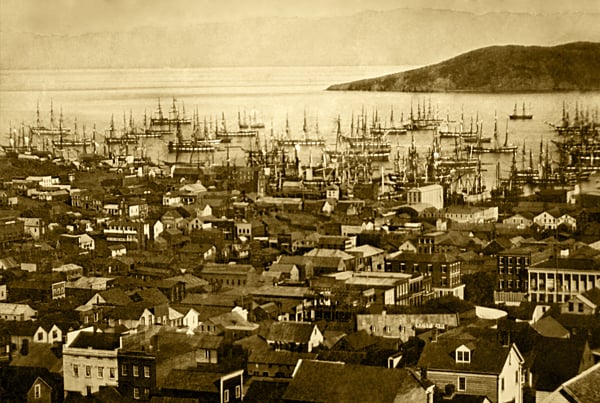
Barry & Patten operated in what must have been one of the most exciting and opportunistic times in the history of California. The California Gold Rush started in 1848 and led to a large boom in population, including considerable immigration. Between January 1848 and December 1849, the population of San Francisco increased from 1,000 to 25,000. The rapid growth continued through the 1850s leading up to the 1859 Comstock Lode silver discovery.
Barry & Patten is by far the oldest known western embossed whiskey bottle. There are actually three versions. The one more commonly known to collectors is a fifth and is embossed around the shoulder ‘BARRY & PATTEN 114 & 116 MONTGOMERY ST. S.F.’ The fifth is found either smooth-based or graphite-based. There is a rarer version that is a quart in size and is embossed like the fifth around the shoulder. This version only comes with a smooth base. The rarest, however, is the face embossed example which is a pint in size and as stated in the advertisement further below, was being sold as a “half bottle,” that was “very convenient for travelers.” This bottle is graphite pontiled.
See the museum example of a shoulder embossed Barry & Patten from the Steven Hubbell collection.
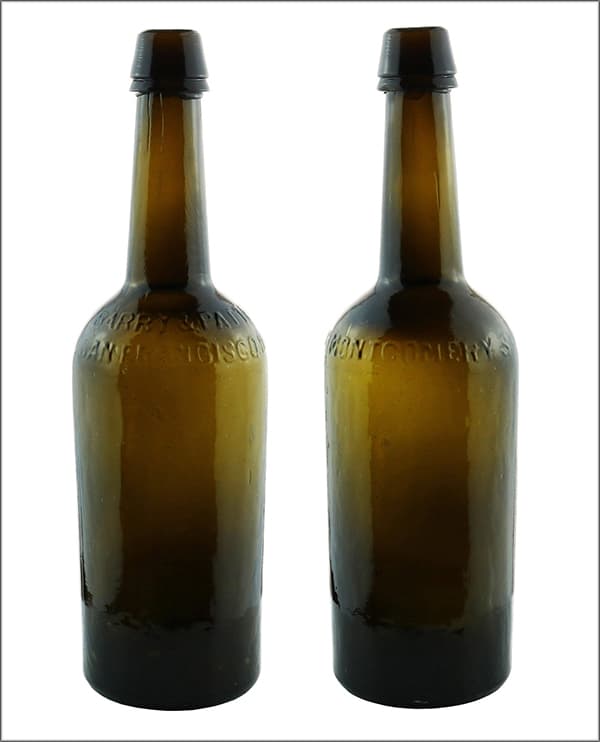
Our museum example is face embossed ‘BARRY & PATTEN’ (1st line arched), ‘116 & 118’ (2nd line straight), ‘MONTGOMERY ST. (3rd line straight), and ‘SAN FRANCISCO (4th line straight). Note the slight address change from the shoulder embossed bottles. Our example is olive amber and has a graphite pontil.
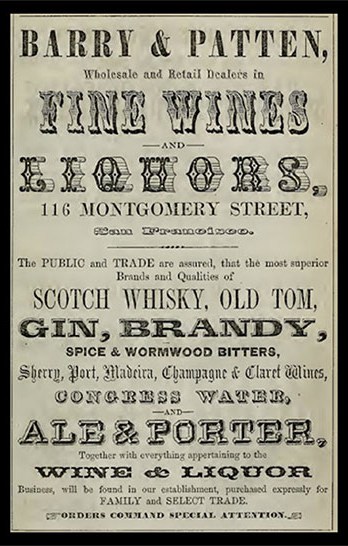
The saloon of Theodore Barry and Benjamin Patten was an important fixture in the early history of San Francisco. Praise for their saloon was ever-present beginning in 1850. Of course, just as with any liquor-based activities, shootings and mayhem at their establishment were often the subjects of newspaper articles. Other descriptions were more floristic. One example from the 1858 California Farmer and Journal of Useful Sciences noted, “Barry & Patten have the most splendid billiard room in all California, it is the very ne plus ultra of a billiard room. Although it is not our custom to speak of drinking rooms, however genteel, yet the Museum is worth seeing; there is no compulsion – a person is not obliged to drink; yet if he will drink, it is better to take good liquors than the vile and poisonous, drugged liquors so common in the saloons here.”
Barry & Patten have the most splendid billiard room in all California, it is the very ne plus ultra of a billiard room. Although it is not our custom to speak of drinking rooms, however genteel, yet the Museum is worth seeing; there is no compulsion – a person is not obliged to drink; yet if he will drink, it is better to take good liquors than the vile and poisonous, drugged liquors so common in the saloons here.
1858 California Farmer and Journal of Useful Sciences
The importance of Barry & Patten, and their establishment in San Francisco, is elucidated in this 1855 statement in the local newspaper, Daily Alta California. . . “We have seen a new twenty-five cent piece, coined at the United States Branch Mint in this city, from material furnished by melting francs. The coin is a very handsome one and is as beautiful a sample as need be of the most beautiful coinage in the world. The first silver coined in the mint here was for Messrs. Barry & Patten.”
Barry & Patten recognized public philanthropy not only as a good marketing gesture with its associated free newspaper advertising but also as a method for contributing to the positive image of a city within which they wholeheartedly supported. Just one of many examples was noted in the Daily Alta California in 1855 when. . . .“A beautifully executed cast of a bust of Gen. John A. Sutter, has been presented to the San Francisco Mercantile Library Association, by Messrs. Barry & Patten, proprietors of the popular drinking saloon on Montgomery street.”
It was a common practice for Barry & Patten to display unusual objects of the day at their saloon, thus preying on the curiosity of people to visit their establishment. Such oddities as exceptional fruits and vegetables, or ancient artifacts, incunabula, and rare paintings were typical examples of objects that may have increased patronage.
Benjamin Adams Patten was born in Concord, Massachusetts about 1824 and died in San Francisco on November 7, 1877. Benjamin resided with Theodore Barry and his family during their entire residence in San Francisco, but Patten remained unmarried. Eliza Barry, Theodore’s wife, became executrix to Benjamin’s estate when he died.
Theodore Augustus Barry, a Boston native, was born April 29, 1825, and died in San Francisco on August 27, 1881. Theodore Barry married Eliza Mary Sharp in San Francisco in 1855. Of their five children, only two lived to maturity, Alice Webster Barry (1859-1927) and Agnes Patterson Barry (1863-1947).
With the death of Benjamin Patten, the doors of the famous saloon were shut forever. Its contents, ranging from liquors, glassware, fixtures, and the contents of the ‘museum’, including . . . “Other articles and relics of interest collected during the early days of the city”, were put on the auction block on June 20, 1878. Based on newspaper advertisements, it appears that Barry & Patten first embarked on the sale of liquor “in wood and bottles” as early as May 1855. It is not documented what type of bottles, but it does raise the possibility that they were the shoulder embossed fifths.
In January 1856, Barry & Patten first advertised the opening of a wholesale and retail liquor store at 118 Montgomery Street, next to their saloon at 116 Montgomery Street. This was a new address and new ‘side’ business for the partners. The address of 114 & 116 Montgomery embossed on the shoulder of the fifth is probably an error since there is no documentation of Barry & Patten occupying 114 Montgomery. It may also be possible that the address could have been in anticipation of the partners occupying 114 Montgomery in a deal that went bad, and they picked up 118 Montgomery instead. If this is the case then the bottle could have easily been from the circa 1855 date. No. 114 Montgomery actually did witness a change in occupancy late in 1854 (Oct 14) from Wells, Fargo & Co. to W. C. Randolph, a watchmaker, and jeweler. Wells, Fargo & Co. used the 114 Montgomery Street address in its advertising until April 4, 1854.

Barry & Patten first advertised their ‘half bottles’ in July 1858. Less than six months later Barry & Patten moved their saloon and store to the southeast corner of Montgomery and Sacramento Streets. It is highly likely that the small size, face embossed Barry & Patten bottle is the same as that advertised as “half bottles”. With the address of 116 & 118 Montgomery St. embossed on the face of the bottle, the mold would have been created between June 1858 at the earliest and September 1858 at the latest, when the saloon was moved to a new address.
This bottle is considered one of the most historically significant from gold rush San Francisco, along with its ‘father’, the fifth size liquor bottle. It should be noted here that the terminal date of the ‘gold rush’ is generally established as 1855, so the term is used loosely.

Support: Research by Eric McGuire.
Support: Reference to Whiskey Bottles of the Old West by John L. Thomas, 2002
Support Image: Auction Lot #12: “BARRY & PATTEN / 114 & 116 MONTGOMERY ST. – SAN FRANCISCO”, (around shoulder), (Thomas #2), California, ca. 1850 – 1856, olive amber color, 11”h, graphite pontil, applied double collar mouth. Several body scratches and a spot of edge of collar roughness are all that keeps it from being a perfect attic found bottle. Curt Paget Collection. – Glass Works Auctions, Auction 100
Join the FOHBC: The Virtual Museum is a project of the Federation of Historical Bottle Collectors (FOHBC). To become a member.

